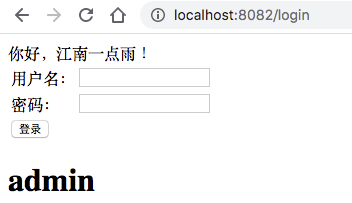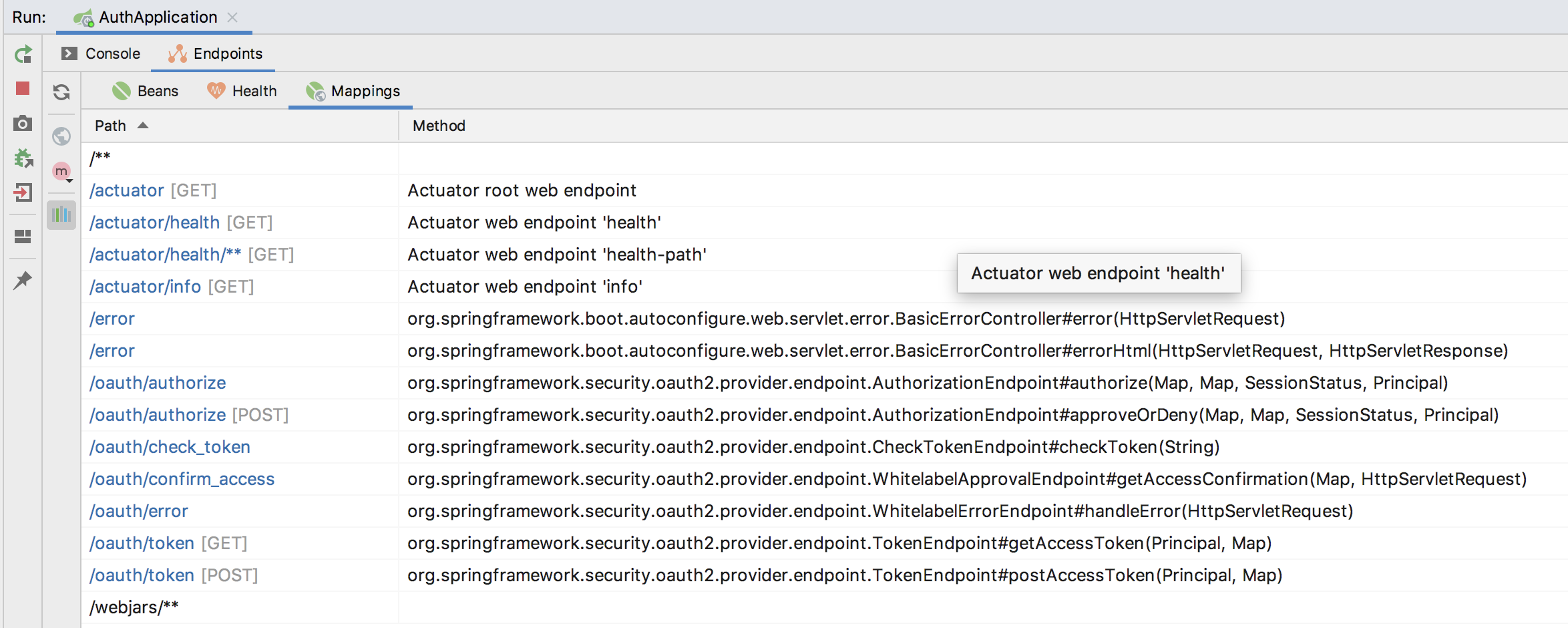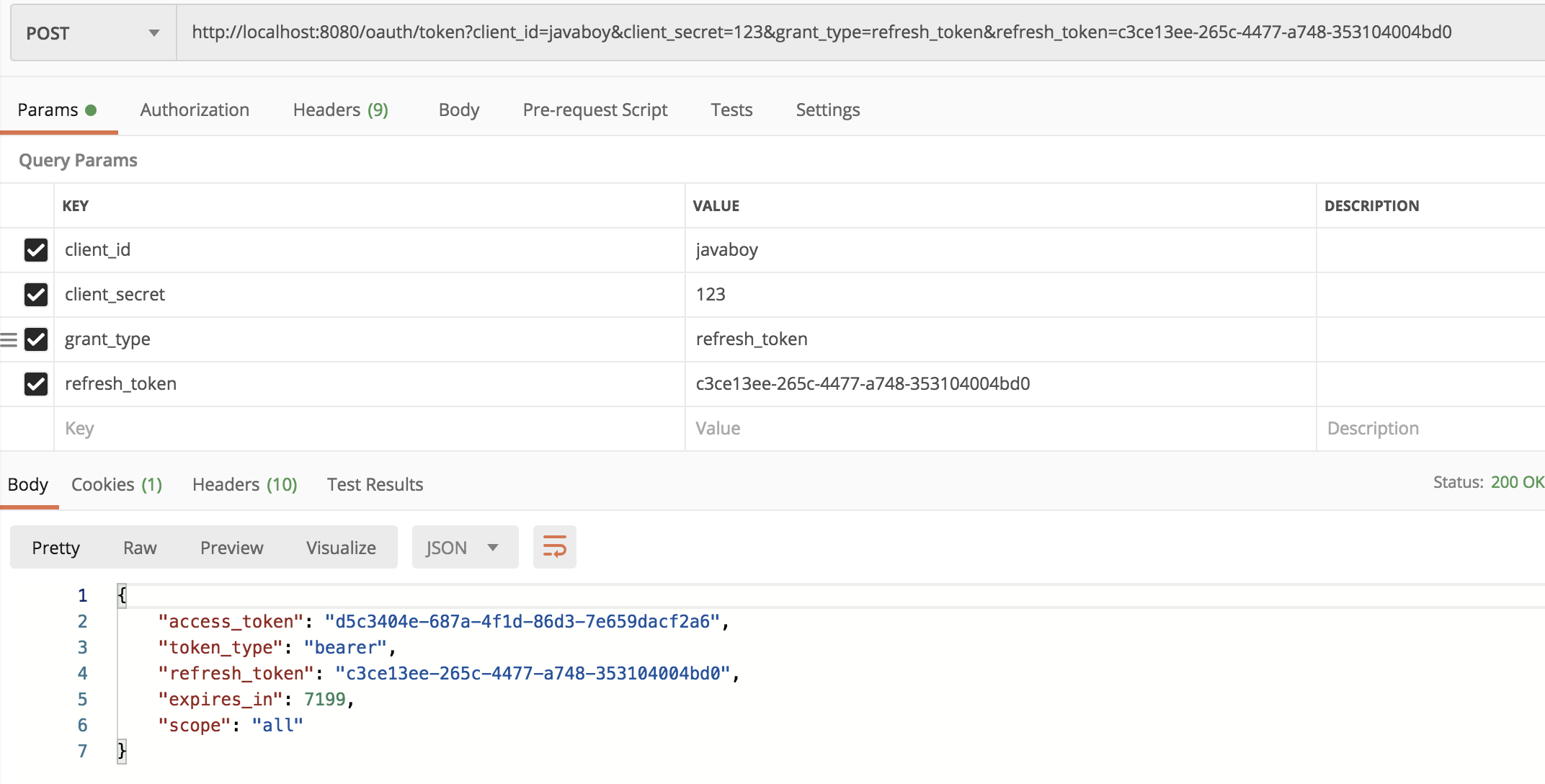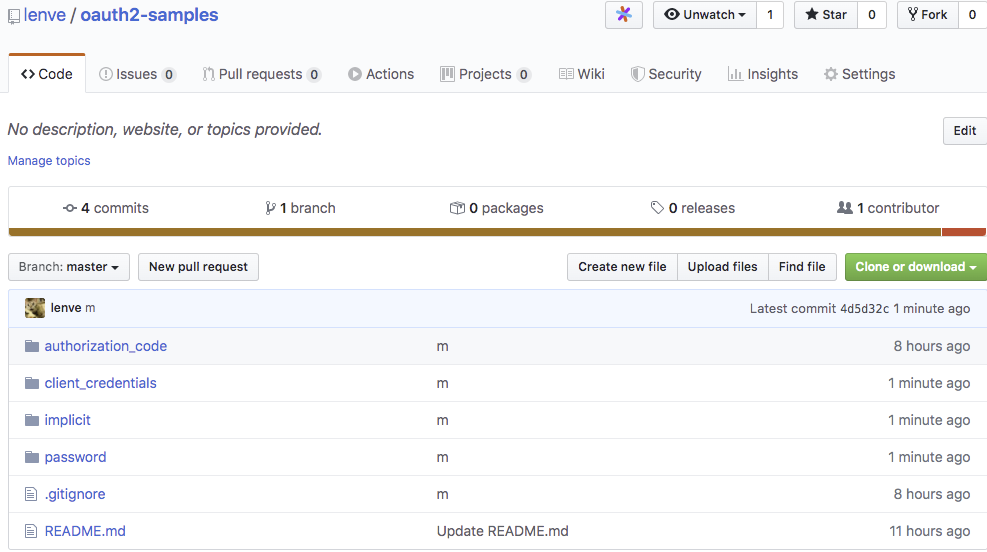四种认证模式
昨天松哥和小伙伴们说了 OAuth2 中的授权码模式,我从头到尾写了一个非常详细的案例,来和小伙伴们分享授权码模式的使用。
有小伙伴表示为什么没有另外三种授权模式的演示代码?要学就学全套的!这不,松哥赶紧把另外三个授权模式的代码整出来,供小伙伴们参考。
今天的案例,我就不从头开始写了,我们就在上篇文章 (opens new window)代码的基础上修改就行了,如果小伙伴们还没看过本系列前面几篇文章,建议一定先看下,否则本文可能看不懂:
接下来松哥直接上代码,各种授权模式的流程我就不再重复介绍了,大家可以参考本系列第一篇文章 (opens new window)。
对了,文末依然可以下载本文源代码。
# 1.简化模式
要支持简化模式,其实很简单。
首先,我们在授权服务器中,增加如下配置表示支持简化模式:
@Override
public void configure(ClientDetailsServiceConfigurer clients) throws Exception {
clients.inMemory()
.withClient("javaboy")
.secret(new BCryptPasswordEncoder().encode("123"))
.resourceIds("res1")
.authorizedGrantTypes("refresh_token","implicit")
.scopes("all")
.redirectUris("http://localhost:8082/index.html");
}
2
3
4
5
6
7
8
9
10
注意,我们只需要在 authorizedGrantTypes 中增加 implicit 表示支持简化模式即可。
配置完成后,重启 auth-server。
接下来我们配置资源服务器。因为简化模式没有服务端,我们只能通过 js 来请求资源服务器上的数据,所以资源服务器需要支持跨域,我们修改如下两个地方使之支持跨域:
@RestController
@CrossOrigin(value = "*")
public class HelloController {
@GetMapping("/hello")
public String hello() {
return "hello";
}
@GetMapping("/admin/hello")
public String admin() {
return "admin";
}
}
2
3
4
5
6
7
8
9
10
11
12
首先在 Controller 上添加 @CrossOrigin 注解使之支持跨域,然后配置 Spring Security 使之支持跨域:
@Override
public void configure(HttpSecurity http) throws Exception {
http.authorizeRequests()
.antMatchers("/admin/**").hasRole("admin")
.anyRequest().authenticated()
.and()
.cors();
}
2
3
4
5
6
7
8
配置完成后,重启 user-server。
接下来我们来配置第三方应用:
首先我们修改 index.html 页面:
<body>
你好,江南一点雨!
<a href="http://localhost:8080/oauth/authorize?client_id=javaboy&response_type=token&scope=all&redirect_uri=http://localhost:8082/index.html">第三方登录(简化模式)</a>
<div id="div1"></div>
<script>
var hash = window.location.hash;//提取出参数,类似这种格式#access_token=9fda1800-3b57-4d32-ad01-05ff700d44cc&token_type=bearer&expires_in=7199
if (hash && hash.length > 0) {
var params = hash.substring(1).split("&");
var token = params[0].split("=");//[access_token,9fda1800-3b57-4d32-ad01-05ff700d44cc]
$.ajax({
type: 'get',
headers: {
'Authorization': 'Bearer ' + token[1]
},
url: 'http://localhost:8081/admin/hello',
success: function (data) {
$("#div1").html(data)
}
})
}
</script>
</body>
2
3
4
5
6
7
8
9
10
11
12
13
14
15
16
17
18
19
20
21
22
23
24
还是之前的超链接不变,但是我们将 response_type 的值修改为 token,表示直接返回授权码,其他参数不变。
这样,当用户登录成功之后,会自动重定向到 http://localhost:8082/index.html 页面,并且添加了一个锚点参数,类似下面这样:
http://localhost:8082/index.html#access_token=9fda1800-3b57-4d32-ad01-05ff700d44cc&token_type=bearer&expires_in=1940
所以接下来,我们就在 js 中提取出 # 后面的参数,并进一步解析出 access_token 的值。
拿着 access_token 的值,我们去发送一个 Ajax 请求,将 access_token 放在请求头中,请求成功后,将请求到的数据放在 div 中。
这就是我们说的简化模式。
配置完成后,启动 client-app,访问 http://localhost:8082/index.html 页面进行测试,用户授权之后,会自动重定向到该页面,显示效果如下:

完整代码可以在文末下载。
# 2.密码模式
密码模式,需要用户直接在第三方应用上输入用户名密码登录,我们来看下。
注意,接下来的代码是在上篇文章授权码模式的基础上改造。
首先对 auth-server 进行改造,使之支持 password 模式:
@Override
public void configure(ClientDetailsServiceConfigurer clients) throws Exception {
clients.inMemory()
.withClient("javaboy")
.secret(new BCryptPasswordEncoder().encode("123"))
.resourceIds("res1")
.authorizedGrantTypes("password","refresh_token")
.scopes("all")
.redirectUris("http://localhost:8082/index.html");
}
2
3
4
5
6
7
8
9
10
这里其他地方都不变,主要是在 authorizedGrantTypes 中增加了 password 模式。
由于使用了 password 模式之后,用户要进行登录,所以我们需要配置一个 AuthenticationManager,还是在 AuthorizationServer 类中,具体配置如下:
@Autowired
AuthenticationManager authenticationManager;
@Override
public void configure(AuthorizationServerEndpointsConfigurer endpoints) throws Exception {
endpoints
.authenticationManager(authenticationManager)
.tokenServices(tokenServices());
}
2
3
4
5
6
7
8
注意,在授权码模式中,我们配置的 AuthorizationCodeServices 现在不需要了,取而代之的是 authenticationManager。
那么这个 authenticationManager 实例从哪里来呢?这需要我们在 Spring Security 的配置中提供,这松哥在之前的 Spring Security 系列教程中说过多次,我就不再赘述,这里直接上代码,在 SecurityConfig 中添加如下代码:
@Override
@Bean
public AuthenticationManager authenticationManagerBean() throws Exception {
return super.authenticationManagerBean();
}
2
3
4
5
配置完成后,重启 auth-server。
接下来配置 client-app,首先我们添加登录功能,修改 index.html ,如下:
<body>
你好,江南一点雨!
<form action="/login" method="post">
<table>
<tr>
<td>用户名:</td>
<td><input name="username"></td>
</tr>
<tr>
<td>密码:</td>
<td><input name="password"></td>
</tr>
<tr>
<td><input type="submit" value="登录"></td>
</tr>
</table>
</form>
<h1 th:text="${msg}"></h1>
</body>
2
3
4
5
6
7
8
9
10
11
12
13
14
15
16
17
18
19
20
这一个简单的登录功能没啥好说的。
我们来看登录接口:
@PostMapping("/login")
public String login(String username, String password,Model model) {
MultiValueMap<String, String> map = new LinkedMultiValueMap<>();
map.add("username", username);
map.add("password", password);
map.add("client_secret", "123");
map.add("client_id", "javaboy");
map.add("grant_type", "password");
Map<String,String> resp = restTemplate.postForObject("http://localhost:8080/oauth/token", map, Map.class);
String access_token = resp.get("access_token");
HttpHeaders headers = new HttpHeaders();
headers.add("Authorization", "Bearer " + access_token);
HttpEntity<Object> httpEntity = new HttpEntity<>(headers);
ResponseEntity<String> entity = restTemplate.exchange("http://localhost:8081/admin/hello", HttpMethod.GET, httpEntity, String.class);
model.addAttribute("msg", entity.getBody());
return "index";
}
2
3
4
5
6
7
8
9
10
11
12
13
14
15
16
17
在登录接口中,当收到一个用户名密码之后,我们通过 RestTemplate 发送一个 POST 请求,注意 post 请求中,grant_type 参数的值为 password,通过这个请求,我们可以获取 auth-server 返回的 access_token,格式如下:
{access_token=02e3a1e1-925f-4d2c-baac-42d76703cae4, token_type=bearer, refresh_token=836d4b75-fe53-4e41-9df1-2aad6dd80a5d, expires_in=7199, scope=all}
可以看到,返回的 token 数据和前面的类似,不再赘述。
我们提取出 access_token 之后,接下来去请求资源服务器,并将访问到的数据放在 model 中。
OK,配置完成后,启动 client-app,访问 http://localhost:8082/index.html 页面进行测试。授权完成后,我们在项目首页可以看到如下内容:

完整代码可以在文末下载。
# 3.客户端模式
客户端模式适用于没有前端页面的应用,所以我这里用一个单元测试来个大家演示。
注意,接下来的代码是在上篇文章授权码模式的基础上改造。
首先修改 auth-server ,使之支持客户端模式:
@Override
public void configure(ClientDetailsServiceConfigurer clients) throws Exception {
clients.inMemory()
.withClient("javaboy")
.secret(new BCryptPasswordEncoder().encode("123"))
.resourceIds("res1")
.authorizedGrantTypes("client_credentials","refresh_token")
.scopes("all")
.redirectUris("http://localhost:8082/index.html");
}
2
3
4
5
6
7
8
9
10
这里其他地方都不变,主要是在 authorizedGrantTypes 中增加了 client_credentials 模式。
配置完成后,重启 auth-server。
接下来,在 client-app 中,通过单元测试,我们来写一段测试代码:
@Autowired
RestTemplate restTemplate;
@Test
void contextLoads() {
MultiValueMap<String, String> map = new LinkedMultiValueMap<>();
map.add("client_id", "javaboy");
map.add("client_secret", "123");
map.add("grant_type", "client_credentials");
Map<String,String> resp = restTemplate.postForObject("http://localhost:8080/oauth/token", map, Map.class);
String access_token = resp.get("access_token");
HttpHeaders headers = new HttpHeaders();
headers.add("Authorization", "Bearer " + access_token);
HttpEntity<Object> httpEntity = new HttpEntity<>(headers);
ResponseEntity<String> entity = restTemplate.exchange("http://localhost:8081/hello", HttpMethod.GET, httpEntity, String.class);
System.out.println(entity.getBody());
}
2
3
4
5
6
7
8
9
10
11
12
13
14
15
16
这段代码跟前面的都差不多,就是请求参数不一样而已,参数 grant_type 的值为 client_credentials。其他都一样,我就不再赘述了。
这段单元测试,执行完成后,就打印出 hello,我就不再截图了。
完整代码可以在文末下载。
# 4.刷新 token
接下来松哥要讲的,是四种授权模式共有的功能。
以授权码模式为例,当我们启动 auth-server 之后,在 IntelliJ IDEA 中,我们可以看到项目暴露出来的接口:

那么这些接口都是干嘛用的呢?我们通过如下一张表格来理解下:
| 端点 | 含义 |
|---|---|
| /oauth/authorize | 这个是授权的端点 |
| /oauth/token | 这个是用来获取令牌的端点 |
| /oauth/confirm_access | 用户确认授权提交的端点(就是 auth-server 询问用户是否授权那个页面的提交地址) |
| /oauth/error | 授权出错的端点 |
| /oauth/check_token | 校验 access_token 的端点 |
| /oauth/token_key | 提供公钥的端点 |
一目了然。这几个端点大部分我们都用过了,没用过的在未来也会用到,到时候再详细和小伙伴们解释。
/oauth/token 端点除了颁发令牌,还可以用来刷新令牌,在我们获取令牌的时候,除了 access_token 之外,还有一个 refresh_token,这个 refresh_token 就是用来刷新令牌用的。
我用 postman 来做一个简单的刷新令牌请求:

注意,刷新的时候需要携带上 refresh_token 参数,刷新完成之后,之前旧的 access_token 就会失效。
# 4.其他
通过上面三个案例,再结合上篇文章,松哥通过四个完完整整的代码,向家展示了 OAuth2 四种授权模式的基本用法。
这四个完整的案例,大家都可以直接从 github 上下载:

好了,先说这么多,如果有收获,一定记得点个在看鼓励下松哥~
案例地址:https://github.com/lenve/oauth2-samples